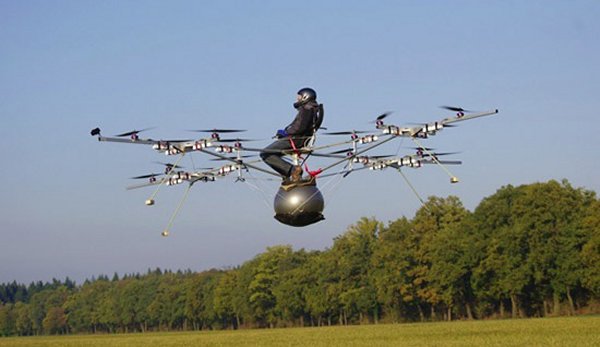While we sit around and twiddle our thumbs, waiting for flying cars to hit the market, people like this are developing their own methods of personal air transport. The helicopter is a brilliant, if odd-looking, design, and it’s easy to picture two more popular types. There’s the Apache with its one, massive rotor (plus tail rotor) and designs like the Chinook with dual-rotor action to keep its massive bulk in the sky. One would imagine it’s quite simple, then, to create a smaller, personal helicopter with an even smaller single rotor. This may in fact be true, but the designers of this e-volo multicopter found that the simplest and most cost-effective way to do so was apparently by utilizing a total of sixteen rotors.
The design looks ridiculous, yes, and all those spinning blades also make it look like some sort of insane torture device, but the fact is that it works. It can lift a person into the air, transport them, and land safely, which is still an amazing feat over 100 years after human flight was first pioneered. The video is also high quality, letting you get a good look at the mechanics of the flying machine rather than appearing as some blurry and dubious video of a guy hovering a few feet over the ground. Four rotors are attached to each of four sections, and it also appears that each rotor has its own battery power source. Watching the thing take off is a bit frightening, in part again because of all the spinning blades and in part because it sounds like a swarm of bees.
The pilot sits in the center and controls the copter via a remote control. According to e-volo’s website, this multicopter can still land safely even if up to four of the rotors fail, this redundancy allowing for a 25% mechanical failure without disastrous results. Dependent on battery capacity and the weight of the passenger, the multicopter can fly for between ten and thirty minutes on roughly $8-9 of electricity per hour. They also note that the helicopter could include a safety parachute, since the rotors are all located on the same horizontal plane as the pilot rather than above, which could be an additional safety measure for this new technology. To check out some other personal air transportation, see our other articles on the World’s Smallest One-Man Helicopter or this Australian Hoverbike.











